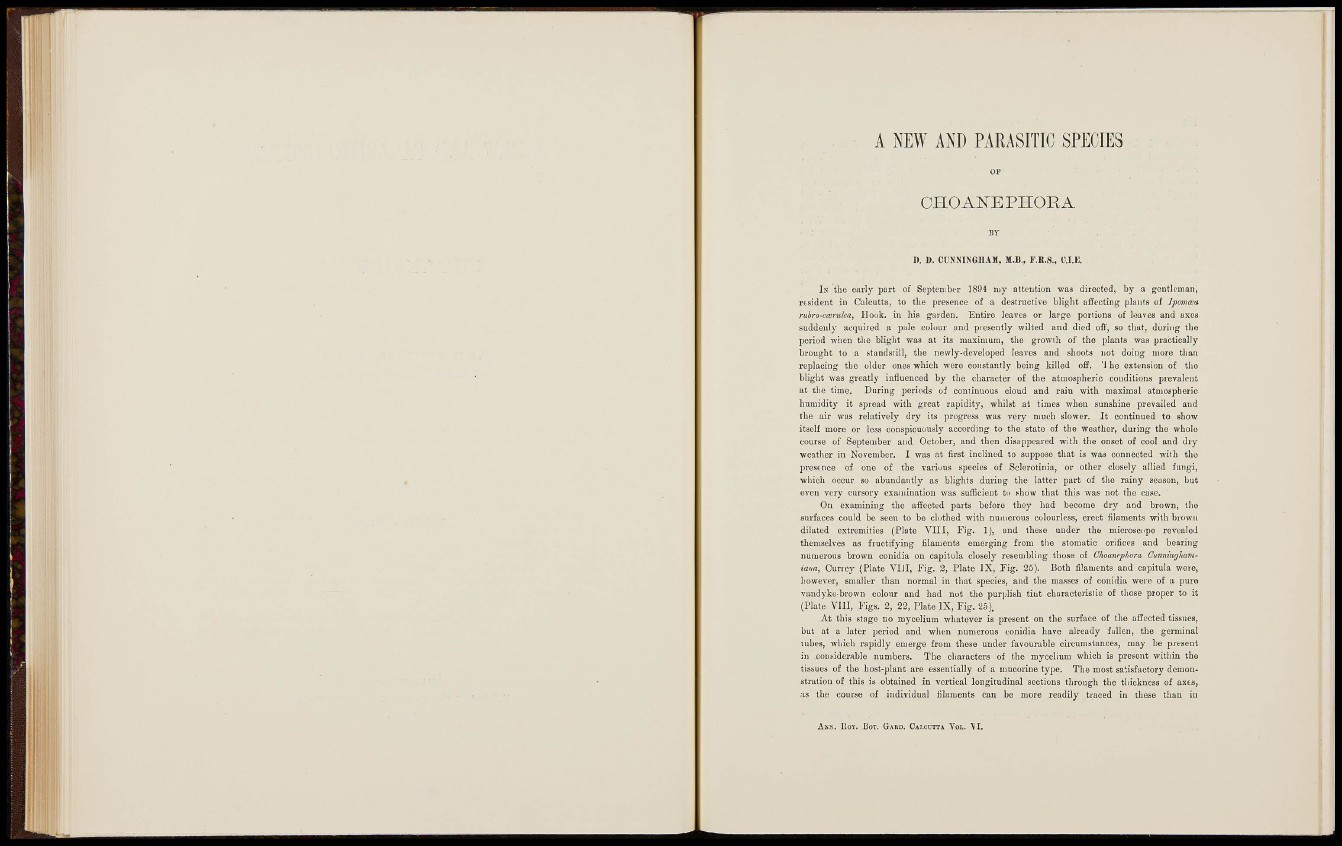
A NEW AND PARASITIC SPECIES
Q H O A N E P H O R A
D. 1». C D N X I N G H A M , M.B., F . R . S , , C.I.K.
I s the early part of September 1894 my attention was directed, by a gentleman,
resident in Calcutta, to tlie presence of a destructive blight affecting plants of Jpmam
rubro-ccendea, ilouk. in hia garden. Entire leaves or large poriions of leaves and axes
suddenly acquired a pale colour and piesently wilted and died off, so that, during tho
period when the blight was at its maximum, the growih of the plants was practically
brought to a standsiill, the newly-developed leaves and shoots not doing more than
replacing the older ones which were constantly being killed off. '1 he extension of tho
blight was greatly influenced by the character of the atmospheric conditions prevalent
at ilie time. During periods of continuous cloud and rain with maximal atmospheric
humidity it spread with great rapidity, whilst at times when sunshine prevailed and
the air was relatively dry its progress was veiy much slower. It continued to show
itself more or less conspicuously according to the state of the weather, during the wholo
course of September and October, and then disappeared with the onset of cool and dry
weather in November. 1 was at first inclined to suppose that is was connected with tho
presence of one of the various species of Sclerotinia, or other closely allied fungi,
wliicli occur so abundantly as blights during the latter part of the rainy season, but
oven very cursory examination was sufficient t<> show that this was not (he case.
On examining the aSected parts before they had become dry and brown, tho
surfaces could be seen to be clothed with numerous colourless, erect filaments with brown
dilated extremities (Plate VIII, Fig. 1), and tbese under the microscope revealed
themselves as fructifying filaments emerging from the stomatic orifices and bearing
numerous brown conidia on capitula closely resembling those of Uhoancphora Cunningltamiana,
Currey (Plate VIII, Fig. 2, Plate IX, Fig. 25). Both filaments and capitula were,
however, smaller than normal in tliat species, and the masses of conidia were of a puro
vandyke-brown colour and had not the purplish tint cbaracteiisiic of tliose proper to it
(Plate VUI, Figs. 2, 22, Plate IX, Fig. 25).
At this stage no mycelium whatever is present on the surface of the aflccted tissues,
but at a later period and when numerous conidia have already füllen, the germinal
lubes, which rapidly emerge from these under favourable circumstances, may be present
in considerable numbers. The characters of the mycelium which is present witiiin tho
tissues of the host-plant are essentially of a mucorine type. The most satisfactory demonstration
of this is obtained in vertical longitudinal sections through the thickness of axes,
as the course of individual filaments can be more readily traced in these than iu
AKK. EOV. BOT. GABD. CALCUTTA VOL. "VI.